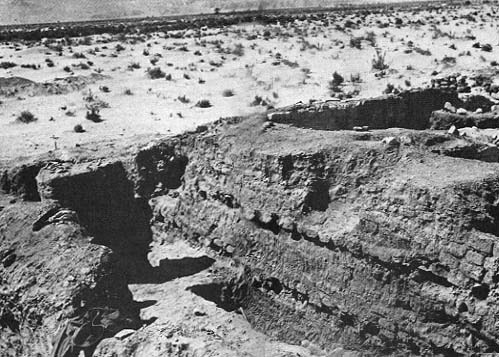Image Details

American Schools of Oriental Research collection, courtesy of the Harvard Semitic Museum
Glueck later modified his view to exclude large scale smelting and to propose a small industrial operation; recent reappraisal of the site agrees with this conclusion. Archaeologists who followed Glueck explained the perforations as holes that held wood beams. These beams were inserted within the wall, parallel and perpendicular to it, to strengthen the wall. The holes indicate where perpendicular beams—long since burned away—once penetrated the wall. A less likely explanation of the holes in the top row is that they held the ends of ceiling rafters spanning the room.
A few holes in the lower row had a distinctive half circle shape (see close-up). Perhaps these holes are the ventilation flues suggested by Glueck, allowing air to circulate between rooms that contained hearths.
